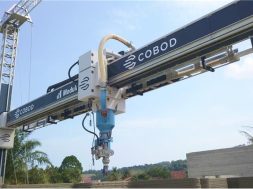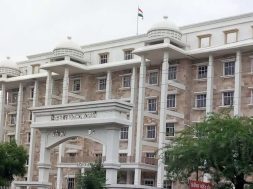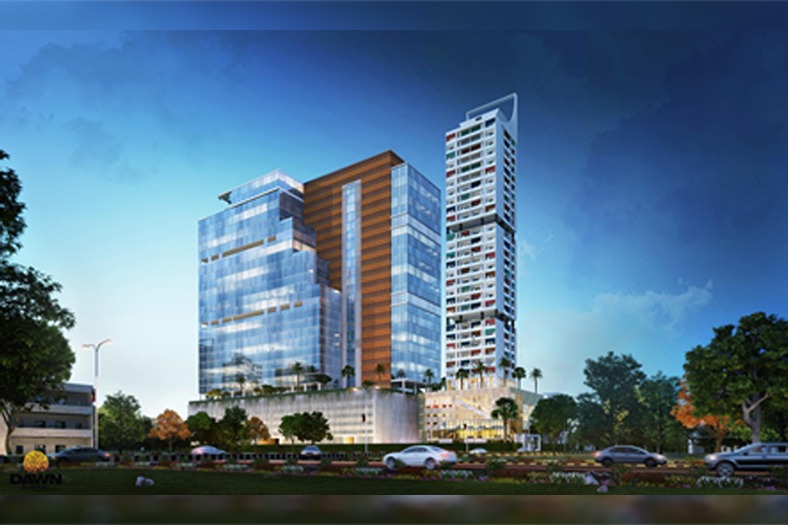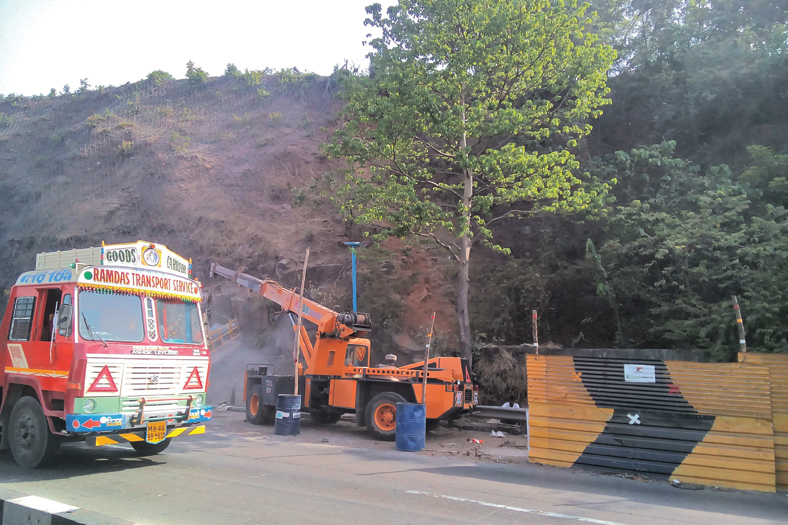Fire safe high-rise
This article will guide us on how India practises the fire and safety systems and its adoption in tall buildings
With the modernisation of building, style, trends and structure, safety measures are practiced with equal importance. Fire safety is one such aspect that is given huge priority. Fire once set is uncontrollable, and therefore the risk is high which ultimately results in huge destruction. Fire safety is a component of building safety and is meant to prevent the ignition of uncontrolled fire that is well planned during the construction of the building.
Due to faulty fire safety practice many building has violated fire safety norms. To avoid problems, adoption of fire safety norms is must and ought to be practised with proper guidance. In the case of high-rise buildings, managing fire safety is huge task, because of the buildings huge structure and number of storeys. The more taller the building, the more is the safety requirement. To avoid fire hazards various fire extinguisher products are available in the market. Today the fire safety products are manufactured with latest technology that features location indicator: where the fire has been caught, alarm, automatic fire suppression system etc., which helps to avoid problem in the right time.
This article will brief us deep on how the fire safety technology are practised in India along with its applications in high-rise buildings.
Installation and inspections Fire safety application is a bare essential for a high-rise building. High-rise buildings pose a greater risk as access to extinguish fire at higher levels, as well as evacuation pose greater challenges. It also requires proper evacuation as well as fire retarding and control measures. However, the installation and applications of safety systems in a proper place is must for its easy accessibility.
It is not a full stop after the installation, further, a regular maintenance, checking and inspection of these fire safety systems is essential to check its working condition. Also certain training and guidance for the residents is very important. While explaining the significance of fire safety and its application in the high-rise, M N Chaturvedi, an expert in fire and safety field, says, “There should be a periodical safety inspection (audit) of the fire protection systems installed in the high-rise building, periodical demonstration of all these equipment for ensuring the worthiness and training to the residents of the society also to make them acquaint with these fire protection means enabling them to use, in case of emergency.”
Rohit Gera, Managing Director, Gera Developments views also matches to Mr Chaturvedi’s views. He states, “It is important to ensure proper and adequate systems are not just provided but also maintained and regularly tested so as to provide a better protection system in case of a fire in the building.”
In the absence of proper fire safety applications, safety challenge is posed not only to the occupants of the building but also to neighbouring buildings that are situated either within the same premise or in close proximity. On this note, Visweswara H A, COO Construction, Development, Design/Policies, Assetz Property Group, says, “High-rises have unique fire safety problems, posing serious challenges to occupants and firefighters. Standard fire fighting methods cannot be used for high-rises because higher the building, greater the potential risk to loss of property and life.”
Sanjay Agarwal, Head-Marketing and Sales, Salarpuria Sattva Group, thinks that fire safety is must for rescuing life of people residing in building. He thinks, “Greater attention should be paid in case of high-rise buildings with regards to fire safety measures as there is a greater risk involved in terms of loss of property and lives due to the structure of these buildings and the time that is taken for evacuation.”
Easy accessibility to the fire safety department is essential to take immediate actions and reduce the risk. In this case, Dinesh Dubey, Vice President, SD Corp., points out, “Even with the modern aerial apparatus the fire department can still reach only 22 floors or up to 70 metres, that too only in a few select cities in India. Thus exterior rescue and fire-fighting is restricted to lower floors. With a fire above the reach of the ladders, fire fighters must move vertically inside the building and counter the fire at the same time when the occupants are descending the stairs. This can result in delay in reaching and countering a fire and increase contamination of the stairway if landing doors are kept open to run hoses.”
Some points highlighting fire safety applications are: Egress system: The potential for crowding and slow movement in exit stairs is a high-rise building exists because of the increased number of floors and because exit stairs do not normally increase in width as they descend. Stair shafts also represent one of the primary means by which smoke moves vertically. Additionally the time it takes an occupant to descend a stairway increases with the height of the building, thus increasing the potential for exposure to smoke.
The forces of nature: Stack effect and winds have a major impact on smoke movement inside a high-rise building. Stack effect increases with the height of the building. Wind velocity and direction also affect the course of fire. They are significantly less of a problem in buildings with lesser heights.
Increased density of occupant and fuel load: By adding floors to a building, the occupant and fuel densities increase within a given building footprint. Despite horizontal fire barriers, fire tends to move upward, thus adding more fuel and affecting more occupants.
Complex vertical utility services: A complex series of pipes, cables, ducts and conduits run vertically through a high-rise building. Any utility affected any given floor may affect services at many other floors. In worst case it may abet the progress of fire.
Overall the fire safety and its application is critical task in high-rise building, it still is necessary to save lives. As well it will add value only if its practiced properly.
Advanced solutionsTechnology has taken a high drive these days and will continue to be in the same way. Fire safety technologies are progressing day-by-day as per the needs and requirement. Every building has its own fire techniques based on its structure, and are applicable accordingly. Some of the common fire safety techniques are fire extinguisher, sprinklers and fire alarms etc, are found in every buildings. To give more knowledge and information the industry experts have detailed on the latest technology available in the market, that will help early fire detection and saving life. Speaking on the technology the experts have common opinion on the technology used for extinguishing fire. Mr Chaturvedi, says, “Generally High-rise building are equipped with fire extinguisher filled with CO2 / DCP chemicals, hydrant system connected to main reservoir to ensure the requirement of water, sprinkler system fitted on all major points including inside the flats, MCP (main contact points),warning stickers, fire alarm etc.”
While explaining the fire safety systems for high-risers, Mr Visweswara, states, “The fire hydrant system – galvanised iron class pipes for wet riser within and outside the building, landing valves, couplings, hose reels, hoses, branch pipes and nozzles, fire brigade inlet connection and yard hydrant – is one of the most effective systems in place. The other systems used in high-rises include sprinklers, fire extinguishers, fire alarm and fire detection, and public address talk back. For high-rises above 60 metres, provision for a helipad must be made.”
Reliable fire detection systems and automatic fire suppression system plays a huge role, believes Mr Agarwal. He opines, “Technologies such as early and reliable fire detection, clear and fast alarming and evacuation processes systems are used for buildings. Other than that, safety systems that are offered are intelligent extinguishing tailored to the requirements of the building and automatic fire-suppressing systems like sprinklers installed in all hazardous areas, with high combustible contents.”
Mr Gera, finds that there are various technologies available in various categories including prevention, control and evacuation. The National Building Code prescribes various aspects in this regard.
Fire Safety can be accomplished using a perfect blend of automatic and manual fire suppression preceded by smoke and fire detection and advanced egress solutions. Mr Dubey pointed out some important technology that can be used for high-risers:Smoke and fire detection: These components detect smoke and fire using smoke and heat detectors respectively to alert the occupants of the potential fire through the fire alarm and public address system. Occupants are further guided to the nearest egress (stairway or fire chute).
Lift well and stair well pressurisation: In a modern approach to fire fighting, pressurising the enclosed stairwell and lift well with fresh air has been implemented. This keeps the air pressure in the stair well and lift well relatively high compared to the adjoining floor. The occupants make their way through the stair well faster. At the same time fire fighters can run hoses without having to think about the contamination of the stair well.
Smoke exhaust or extraction system: In high-rise buildings with centralised air conditioning, smoke exhaust system is another innovative solution to remove the smoke generated through the return air duct. It is most commonly observed that occupants are first impacted by smoke rather than fire.
Automatic sprinkler system: Sprinklers actuated with the rise in temperature burst and release water in the affected area to suppress a localised fire. Usually installed within common areas, lift lobbies and apartments.
Hydrant system: A system enabling the occupants or fire fighters to counter fire from spreading across to larger areas or upper floors. Usually installed in the stairway.
Portable fire extinguishers: Dry chemical based fire suppression. Hand held application.
Refuge areas or fire check floors: Provision of Refuge Areas (Well Ventilated) on intermittent floors to provide immediate refuge to occupants and Fire Check Floors (Ventilated from all Sides) as applicable to prevent fire from reaching higher or lower levels.
With these advanced systems, high-rise buildings can avoid maximum risk of life and property loss.
India’s adoption on fire and safetyThe fire fighting system to a proposed building is designed based on the recommendations of the National Building Code of India, 2005. Fires have been identified as the fifth biggest risk in India. It is quite essential to follow the set regulations that have been penned down by the authorities to ensure safety of lives and property. Unfortunately these rules and regulation are not well practiced in the country which is often resulting into fire hazards.
The country should put itself to practice the safety codes and norms that have been made for safety in buildings. Mr Visweswara, says, “In India there are many codes and standards for fire safety. Unfortunately these are rarely followed resulting in major fire which causes lot of damage. It is imperative that builders adhere to a set of codes and regulations to ensure safety of its occupants and their property. Having said that, these systems that are put in place by the developer and builder should be duly maintained by the occupants of the building.”
During the fire hazard it is not only the responsibility of the builders or developers but it is also a responsibility of every individual or resident to take charge in case of emergency. Stressing on residents responsibility and awareness, Mr Agarwal, opines, “With the increasing awareness among people on fire safety the scene is changing. The onus cannot be only on developer, it is also necessary for the residents (of the building) to ensure fire safety measures are followed in case of a fire outbreak to minimise damage. As responsible developer in all our projects efficient firefighting systems are installed to avoid any untoward incident. Fire drills are also conducted among the residents so that they know where they need to assemble and how to act in case of a fire break out.”
Apart from individuals responsibility, a proper study has helped all builders and developers to improve the fire safety practices in India. On this note, Mr Dubey, says, “The approach of relevant authorities in India with respect to adoption of fire and life safety is yet to be carefully assessed. He feels, few cities which are coming up with High-rise Buildings have already begun to implement the relevant guidelines for fire suppression and life safety keeping in line with the international regulations in force. Also, historical incidents have been analysed to determine the cause and prevent the spread of fire within the building.”
Fire safety is getting importance and is further developing in India. Mr Gera has optimistic view on fire and safety, on that he says, “Fire and life safety are gaining significance and importance in India. At a national level the value to human life needs to see a substantial increase. This will then translate to improvement in implementation of fire protection systems. We have already seen a substantial increase in compliance requirements towards fire safety systems in various cities this is necessary and warranted.”
Fire and safety expert, Mr Chaturvedi finds that, fire and safety is being adopted, but still it is a matter of long debate.
ConclusionManaging fire safety system is a difficult task in India, due to the congested building systems which often results in fire accidents. To avoid risk and fire hazards, the country must avoid faulty safety practise and follow the appropriate regulations. With the new technologies available for fire safety systems, hopefully it will be easier to deal with the problems and India will be a risk free and safe country in terms of fire accidents. ___________________________________________________________________The approach of relevant authorities in India with respect to adoption of fire and life safety is yet to be carefully assessed.
Dinesh Dubey, Vice President, SD Corp._____________________________________________________________________
With the increasing awareness among people on fire safety the scene is changing.
Sanjay Agarwal, Head-Marketing and Sales, Salarpuria Sattva Group____________________________________________________________________
Fire and safety is being adopted, but still it is a matter of long debate.
MN Chaturvedi, Fire and safety expert______________________________________
In India there are many codes and standards for fire safety. Unfortunately these are rarely followed…
Visweswara H A, COO Construction, Development, Design/Policies, Assetz Property Group,
20
Cookie Consent
We use cookies to personalize your experience. By continuing to visit this website you agree to our Terms & Conditions, Privacy Policy and Cookie Policy.









